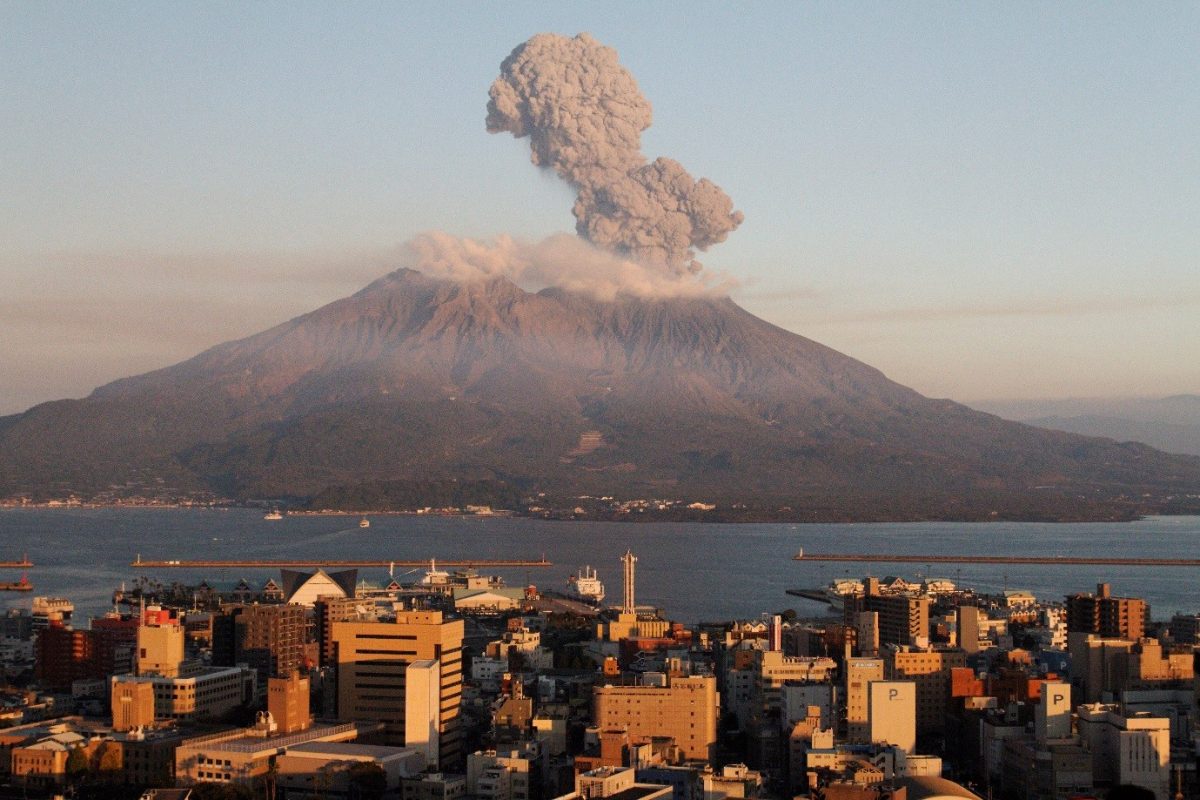
Image courtesy of Kimon Berlin, CC BY-SA 2.0
Scientists monitoring the Sukurajima volcano in southern Kyushu, Japan have raised the alert level to 4 on a 5 point volcanic alert system, indicating that a major eruption could be imminent. Authorities have already evacuated 77 residents living in the immediate vicinity and have warned if the situation worsens additional evacuation and protective measures could be necessary.
A swarm of more than 800 tremors have been detected, centred only a few kilometres beneath the Minami-dake vent of the volcano, and dramatic changes in the shape of the mountain have been measured. This could indicate the rise of magma from underground chambers and such activity has been a precursor to major eruptions of Sukurajima in the past.
Why the concern?
Sukurajima is only 4 miles from the city of Kagoshima, with a population of 700,000 residents. Previous eruptions, such as the explosive one in 2013, have sent ash up to a height of 20,000 feet with fallout across the city and sent rocks flying into populated areas. Residents were forced to walk around town carrying umbrellas and wearing masks for protection, and children were required to wear hardhats on walks to school. Fortunately, on this occasion there were no major injuries, although much damage was caused. But this has not always been the case and previous explosive eruptions have resulted in fatalities. The 1914 eruption was the most powerful in 20th Century Japan, responsible for 68 deaths and the resultant lava flows were sufficient to fill the narrow straight between the island and the mainland, joining it to the peninsula.
One significant concern that is gaining much attention is the proximity of the volcano to the Sendai nuclear power plant, 31 miles away. The plant has only recently reopened and is the first reactor to be restarted since the Fukushima disaster as a result of the earthquake-triggered tsunami in 2011. The nuclear power programme’s ability to withstand natural disasters is understandably still subject to much scrutiny.
Japan lies at the meeting point of 4 tectonic plates; the North American, Pacific, Eurasian and Philippines Plates, along the Pacific Ring of Fire. It has more than 100 active volcanoes and Sakurajima volcano has emerged as a result of the subduction of the Philippines Plate beneath the Eurasian Plate.
The volcano erupts almost constantly but, unlike many other frequently erupting volcanoes which produce more liquid – basalt lava – Sakurajima streams andesite, a sticky viscous lava that usually has a high gas content. Such regular explosive eruptions are unusual.
The authorities are certainly prepared for an explosive eruption, but dealing with a complacent population who are used to the volcano’s activity may prove more difficult. Despite the fact that two days after the alert level was raised activity has quietened down, the Meteorological Agency remains on alert for signs of a major eruption and warn that an eruption could occur at any time. Intense monitoring of the volcano will continue for at least another 2 weeks.
Annual evacuation drills are carried out and refuge shelters are provided in the event of an unexpected explosive eruption. Sakurajima is probably one of the most monitored volcanoes in the world. GPS is used to detect movement at shallow depth beneath the surface, seismometers detect earthquakes, a network of tiltmeters detect every movement of the mountain, sensors detect rises in temperature and remote sensing is used to monitor changes in emissions of HCl and SO₂.
What makes this such an absorbing state of affairs is that despite the use of sophisticated technology to monitor the volcano and the mitigation strategies in place to prepare for such an eventuality, it still remains impossible to predict whether the next explosive eruption will occur in the coming days or weeks. For now, the intense observation continues and the population remain on high alert whilst we wait to see what will happen next.




